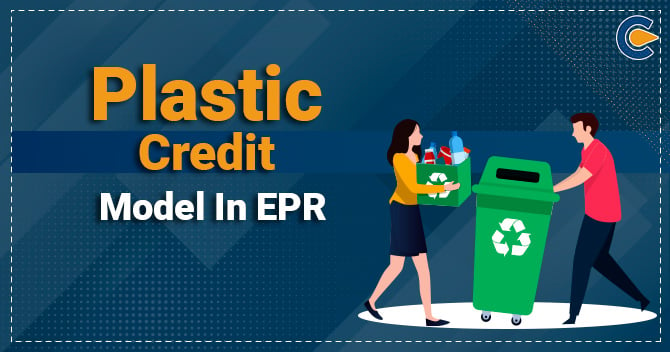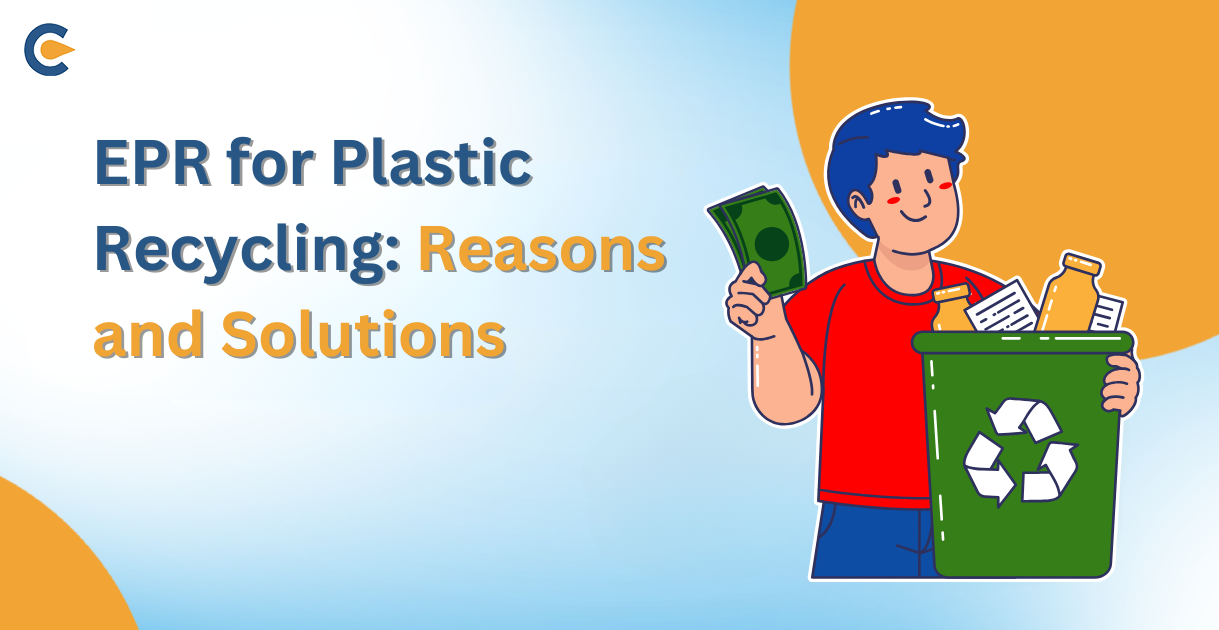A plastic credit Model in EPR is envisaged in the case where a producer is not required to recycle their packaging but to ensure that an appropriate amount of plastic waste is recovered and recycled. The Plastic credit certificate is a mandatory set of documents as it is a proof of execution of a project and authenticates producers, importers and brand owners (PIBOs) in conformity with the recycling standards set under the EPR policy. The aim is simply to determine the professional to steer the implementation and to supply the funding required under the principles to support plastic recycling and promote the business. The producers are at liberty to make the decisions regarding the establishment of channels for collecting plastic credits.
Introduction to Plastic credit
Plastic credits are like carbon credits. Plastic credits are a new concept, but some conscious companies are adopting it. Such plastic credits have the potential to solve larger systematic issues. It can be a powerful tool to mobilize resources for solving issues of the environment and society caused by plastic pollution.
Plastic credits are sold to companies that want to be plastic neutral and cannot reduce the use of plastic or make zero use of plastic. These companies buy the plastic credits in volumes like in kilograms equal to the kilograms of their plastic footprint. The money invested by the company funds the project of recycling plastic waste equivalent to the plastic footprint of the company and thus making them plastic neutral. Plastic credit helps in making sure that all the plastic products are recyclable and that they are actually recycled.
There are certain strengths of the plastic credits; some of them are as follows:
- They are cost-effective from an economic point of view.
- Plastic credits are issued for the plastic wastes that would have ended in the environment by adversely impacting it.
- Plastic credits are like remuneration for environmental services.
An overview of the Plastic Credit Model
The plastic credit model is a model for recycling plastic waste. It ensures effective fulfilment of all EPR conditions. The plastic credit model is envisaged because the producers are not required to recycle their own packaging but to make sure that an equivalent amount of packaging waste has been recovered and recycled to meet their obligations. However, producers must acquire evidence of the recovery and recycling of plastic waste from properly accredited processors. These properly accredited processors can be recyclers, W2E plant operators, cement co-processors, users utilizing plastic on roads, or exporters.
A plastic credit certificate is a set of legal documents that authenticate the PIBO’s conformity. Such conformity is as per the recycling standards set by the EPR policy of Plastic Waste Management Rules 2016.
The working of the Plastic credit model
The Producers may exchange the credits from the processors, and such processors have been specifically accredited for such purpose and through registration at the EPR portal. These plastic credits are given in the form of a plastic credit certificate on the basis of the amount of plastic waste recycled, and this is done to acknowledge their contribution to waste management. A producer, importer, or brand owner (PIBO) can own a plastic credit certificate for the same quantity of recycled plastic waste as they want directly from a verified seller network to offset the EPR requirements. The Plastic credit certificate ensures that the plastic waste is collected, transported, and recycled ethically and also ensures that the unprivileged sector has realized the benefit (monetary).
With a digital ecosystem that makes the buying or selling of these plastic credits easy and so, EPR implantation in the nation can be achieved. A plastic credit model that is digitalized in place for brands on one side and recyclers, incinerators, or collectors on the other side to get a quantity of plastic recycled for a price that was agreed which eliminates the middleman and paves the way for a transparent process. The digital platform enables the data processing environment to verify and match the orders, perform transactions and send data to the registry for the records. The whole process is visible to both parties, and the reports are also viewed to ensure transparency.
The producers and the processors (or exporters) are affiliated with the EPR. The Producers may exchange the credits from the processors. These are plastic credits for the financial transaction at a price and other terms and conditions. The producers exchange the credit with the processors that have been specifically accredited for the said purpose. These accredited processors receive extra funding for each tonne of plastic packaging waste that they process and have incentives to acquire more tonnage to increase the recovery rates.
The system is designed to make sure that the funding can be directed to remove obstructions in the material recovery chain through the market corrections. The market corrects itself and guides the funding to sources where the sources can be material collections, sorting, reprocessing, and support to the consumer markets. And so, the entity can have the incentives to support the long-term investments to support their efforts.
The affiliation (accreditation) and the registration of the recycler and the processor form a part of the plastic credit in the EPR system. EPR is used for registering the traceability of plastic waste so that plastic waste cannot re-enter the value chain. The plastic waste traceability is very important to make sure that there is no duplication and actual work on the ground.
Risk linked to Plastic credits
The following can be classified as the fundamental risk linked to the plastic credits:
- Plastic credits can be used for simple greenwashing without a relevant or positive impact.
- Companies that are using plastic credits are not still committed to any long-term collection or recovery of the infrastructures.
- Plastic credits are sometimes misused by short-term activities or even sometimes by just single events like clean-ups.
- Plastic credits lack transparency, and they have unclear structures or control mechanisms without independent external verification. The collected amounts of plastic waste and the treatment processes applied or the outcomes of such treatment can lead to fraud; for example, plastic credits are not sold or accounted for twice. In some cases, there can be a lack of liaison with the national or regional authorities.
- The clear documents that collect amounts of plastic waste are also properly recycled and exported for disposal in other countries.
- Plastic credits focus on plastic pollution[1] and plastic waste only. However, non-plastic waste is also increasing seriously.
- It is still not clear who would take the authority of plastic credits and how companies should be obligated to demonstrate the use of plastic credits.
Conclusion
Plastic credits model or plastic credit certificates are proof of recycling activities. It has the potential to enhance the recycling of plastic waste and provide transparency in compliance with the EPR system. It generates funds that can result in accelerating sustainability. It is a platform which can streamline the ecosystem. The plastic credit is similar to carbon, but it only focuses on plastic waste. It promises to source funding for all the underfinanced plastic waste management in different parts of the world. However, they show some strengths and weaknesses, especially in regard to the EPR.
Read our Article:EPR Post-Compliances for E-waste Management










